Today I have a new (well, sort of new) finished sweater to show off. First, however, thank you so much for all of the kind comments about my husband’s Open Cable Cardigan. I really appreciated the response! I know many of you asked whether I’d write up the pattern, and I apologize but I can’t.
When I said I designed it on the fly, I wasn’t exaggerating. Although I have drawings and notes, I didn’t always stick to what I had planned to do and I didn’t keep really great records of my last-second changes. Let me explain a little bit more why recreating the pattern for others to follow would be so difficult.
A rough description of how you knit the sweater:
1. You knit the body up to the armhole. Then you knit the sleeves to the armhole, and join the sleeves to the body.
2. Once you’ve got everything in one piece, you work raglan decreases (taking stitches out of the sleeves and body at four points) until you’ve eliminated approximately half the sleeve stitches.
3. You then knit to the first sleeve, and go back and forth only on the sleeve stitches. At the end of each row, you work a sleeve stitch together with a stitch from either the front or the back. When/where you stop doing this depends upon whether you’re knitting a cardigan or a pullover. Elizabeth Zimmerman’s instructions were for a pullover and included a small diagram of what to do at the neck.
The tricky part of converting those rough instructions into my husband’s sweater was the cable. I had really wanted it to start at the cuff of the sleeve and end identically at the neck. That meant ensuring that the sleeve was the length it needed to be before I joined the sleeves to the body. At the same time, I had to calculate the rate and number of raglan decreases I needed before I switched to the yoke/saddle decreases. Finally, I had to make sure that the row count was such that the cable crossed for the last time right where I wanted it to. In case that wasn’t difficult enough, I used a twelve-row cable, so I had very little room to fudge.

Even having drawn everything out, I had to play with my decreases as I went. There were several points when I thought the sweater was going to be a big fat failure. Susan and I love to share patterns, but when we do we try to make certain that the directions will allow anyone who follows them to have a successful project. I don’t feel comfortable that I could write up this pattern well enough to guarantee that.
But — the seamless hybrid yoke concept itself isn’t all that hard. If you follow EZ’s general directions, but don’t insert a cable on the sleeve or else use a cable with a much smaller row count, it would be much simpler to do.
* * * * * * *
Long, long ago, I started and almost finished a lovely pattern called Baby Cables and Big Ones, Too (Ravelry link). I had it all finished except for one sleeve, and then I stopped. Part of the problem was distraction — I always find something else I want to work on. The other issue is that I decided it was too short. Because it’s knit from the top down, it would be easy to add length, but I just never got around to it. Once I finished all of my Christmas knitting, however, I decided it was time to finish this sweater.
So here’s my Baby Cables with both sleeves:


One reason adding length made me sigh was that I had added a small cable to the hem. To add length, I had to rip back to before the cable started. I liked the detail, though, so when I added length I kept the cable at the hem:

I knit my Baby Cables out of Jaeger’s Extra Fine Merino. It’s a lovely yarn, and I’m sad that it’s no longer available.



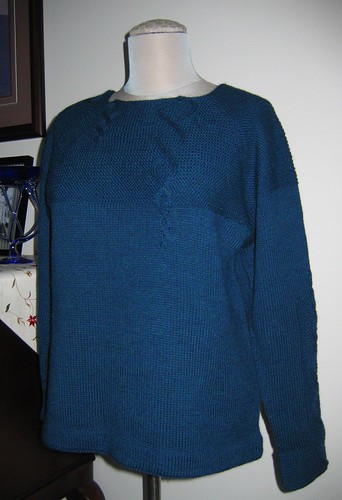
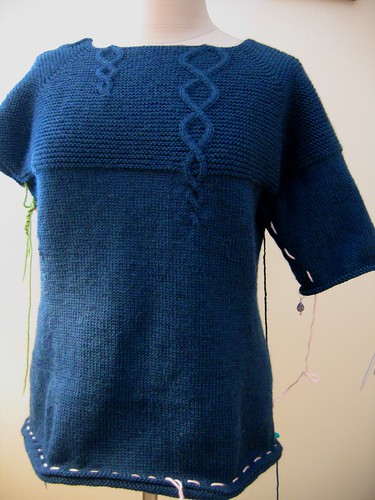

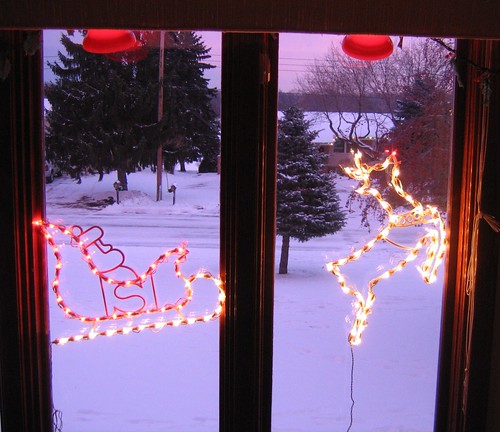


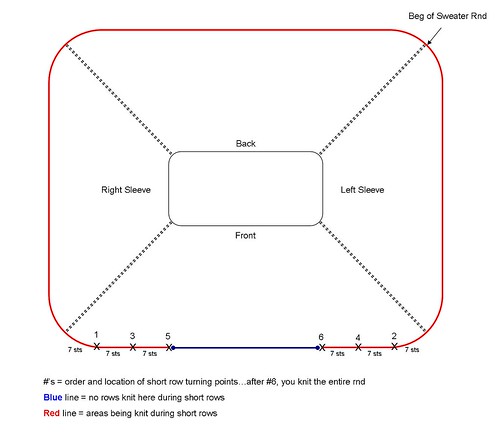
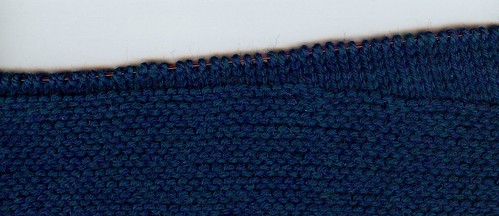
 ). Susan struggled to find just the right yarn and actually ended up knitting the entire yoke twice.
). Susan struggled to find just the right yarn and actually ended up knitting the entire yoke twice.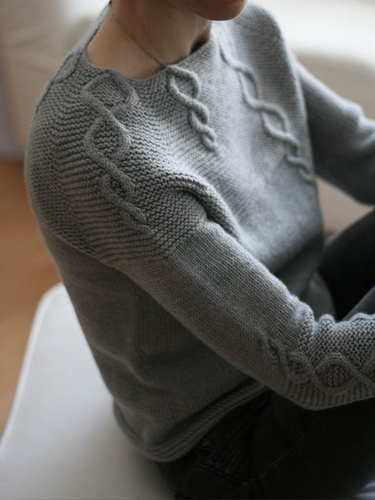







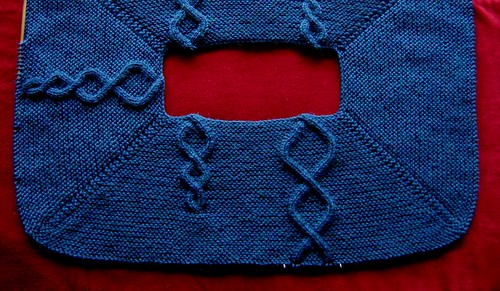 I could not get a good picture — the color cannot be captured — but here is a better shot of the yarn:
I could not get a good picture — the color cannot be captured — but here is a better shot of the yarn: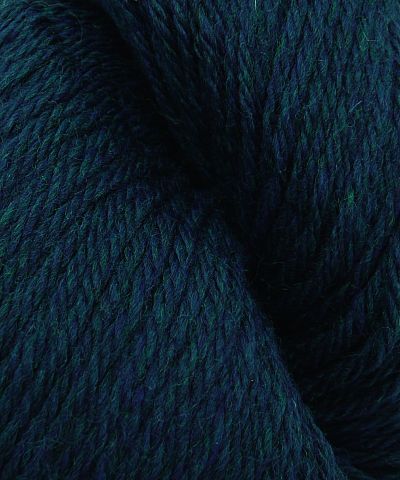
 . Also, my sweater will not end up as shaped as Sally’s — I may even keep a straight profile. We will see when we get there!
. Also, my sweater will not end up as shaped as Sally’s — I may even keep a straight profile. We will see when we get there!














